A conversation with Götz/Rissa, Irene Daum and Peter Tepe | Section: Interviews
The famous painter Karl Otto Götz, one of the most prominent artists of Art Informel, also worked as an empirical scientist in the 1960s and 1970s. A list of his scientific publications – comprising 28 texts and including translations – can be found on his homepage www.ko-götz.de. The first papers were published in 1961 and the following years and mainly addressed the possibilities and limitations of information theory applied in visual art. Later on, he dedicated himself to empirical psychology. Most of his work can be assigned to this field.
From 1959 to 1979, Götz was Professor of Liberal Art at the Düsseldorf Art Academy. He collaborated with his wife Karin Götz, who also became a famous artist under the name of Rissa. She also taught Liberal Art at the Düsseldorf Art Academy from 1969 to 2007 and both worked with renowned psychologists like Daniel E. Berlyne (1924–1976) and Hans Jürgen Eysenck (1916–1997) who developed psychological methods to study aesthetic preferences and personality traits. The results were published in scientific journals. In his autobiography Rebel with a Cause[1], Eysenck, a Personality Psychology expert at the University of London describes the fruitful cooperation with Götz and Rissa in some detail and he also outlines the joint development of test materials (abstract pairs of small drawings) which was used to study the aesthetical preference of visual materials .
Twelve articles, which partly consist of translations of German texts, were published in the American scientific journal Perceptual and Motor Skills. Götz and Rissa (under her real name Karin Götz) summarized their ideas based on psychology and art theory in the book Probleme der Bildästhetik – Eine Einführung in die Grundlagen des anschaulichen Denkenswhich was published by Concept Verlag Düsseldorf in 1972.
Karl Otto Götz, who is 102 years old today has gone blind some time ago, contributed by oral communication to the interview. The written draft was prepared by Rissa who still remembers the joint research and its background well. The text was presented to Götz by Rissa and he fully approved the present version of the interview. Conversations during a visit to Götz’ and Rissa’s home in Wolfenacker by Irene Daum and Peter Tepe on 1 June 2016 complemented the text which was exchanged by email.
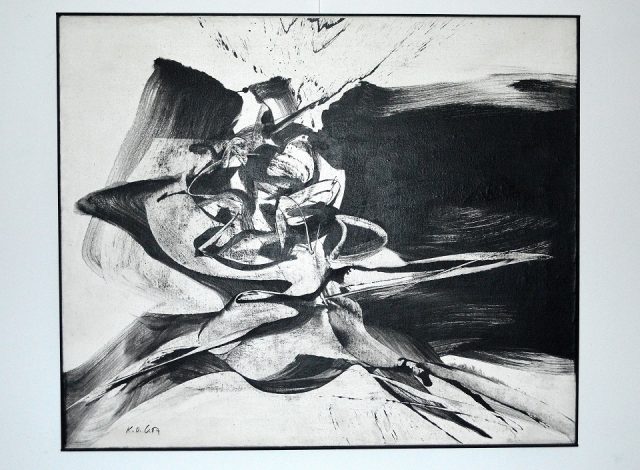
Visual artists like Karl Otto Götz also frequently pursue literary activities and write poems in particular. However, a visual artist who works professionally in the field of science – in this case as an empirical psychologist – is very rare. Why was he interested in this type of art-science combination? Why did he decide to conduct psychological research?
In the 1960s, Karl Otto Götz was fed up with the subjective word cascades of art critics and art reviewers in newspapers, art books and catalogues. In particular, he was unable to accept the prevalent humanistic hermeneutics and the related analysis of visual art based on semantic or idealistic views.
Götz believed that if empirical science established hard facts about the interaction of the observer and the visual object (color, shape, images in general and visual art works in particular), the results would have an effect on the perception of people in real life, making it more objective. He assumed that scientific investigations (in the fields of information and communication theory, perception and personality psychology, cognitive psychology) would contribute to the formation of a more objective knowledge base concerning the interaction of art (in particular visual art) and the observer.
Karl Otto Götz thus developed a specific interest in the use of empirical science to address aesthetical and artistic questions.
He aimed to establish something like exact aesthetics. His strategy to no longer address issues relating to aesthetics from philosophical, speculative, idealistic and moral points of view had a decisive effect on me and I got hooked on supporting his research.
As of 1972, he dedicated himself to exact aesthetics using methods of empirical psychology after an initial focus on information theory.
Exactly. Karl Otto Götz assumed that people with different predispositions also had different perceptions regarding aesthetics. Using tests of color and shape, Götz intended to prove this assumption. It is one thing to determine that individuals have certain color preferences (e.g. women choose their clothes based on their favorite color) but it is another thing to systematically and objectively investigate color preferences in a large group of individuals in relation to certain personality traits. His main concern was to empirically work out the varying degrees of visual abilities in people.
In which way did Karl Otto Götz acquire the knowledge necessary for the psychological studies: through self-study of the literature or by special training?
He acquired the necessary knowledge via the study of a large number of psychology texts. He studied e.g. gestalt psychology and various other fields of psychology, statistics and information theory every day up to late at night in order to be able to administer visual tests in a professional way. He did, however, not study psychology at university.
During some stages of his development and also in his poetry, Karl Otto Götz showed a certain affinity to surrealism. Were ideas of the subconscious according to Freud or Jung which played a role in surrealism relevant for turning towards psychology?
The unconscious, as conceptualized and used by members of the surrealism movement, did not play a role in his scientific studies.
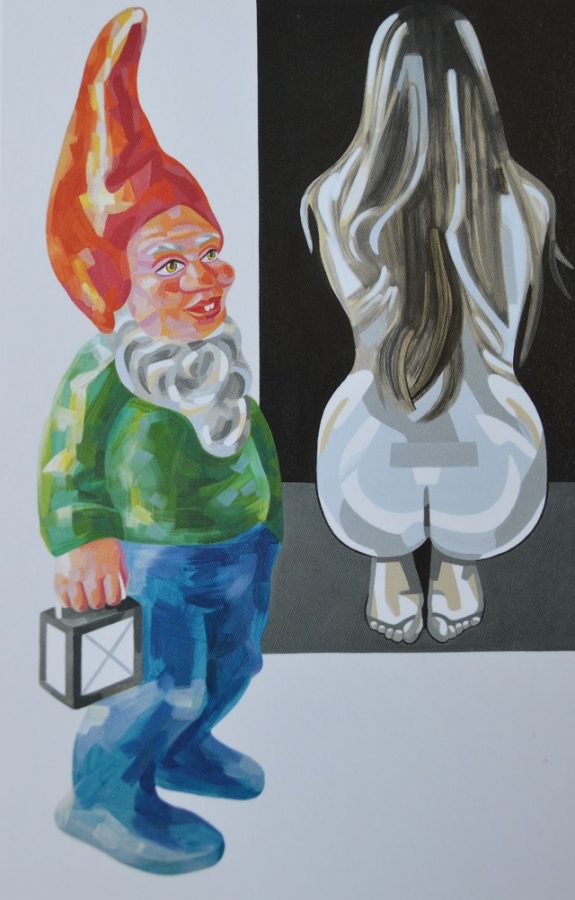
The French information theorist Abraham André Moles (1920–1992), who visited Karl Otto Götz in Düsseldorf in the mid 1960s, put him in contact with perception psychologist and experimental aesthetician Daniel E. Berlyne who taught at Toronto University back then. In 1971, Berlyne published the book Aesthetics und Psychobiology and he visited us in Düsseldorf to discuss a project which eventually led to Karl Otto Götz’s Visual Aesthetic Sensitivity Test (VAST). After a sufficient number of art students completed the test to allow meaningful analyses, Berlyne wanted to administer the test to students of other fields in Toronto. Because of his premature death in 1976, this study was not completed.
Please describe the general objective of the test and please give an example.
The VAST-Test comprises 52 pairs of different abstract drawings in black (examples of test items: a pair of drawings made up by different shapes or a pair made up by different Art Informel type drawings). The differences in design between the members of a pair were minimal. However, one drawing of a pair was designed in a more balanced (harmonious) way than the other. The other drawing comprises small irregularities, making it unbalanced. The 52 pairs are administered successively to each subject. The subjects are asked to judge which member of a pair was more balanced than the other and their responses are marked on a test form. The aim of the test is to establish which of the members of a pair reflects harmonic proportions of form according to classical aesthetics. The test does therefore not assess subjective preference or dislike (subjects might prefer the unbalanced drawing even though this would be an error within the framework of VAST), but focuses on the visual aesthetic abilities of people independent of their subjective preferences.
Did the team Götz/Rissa aim to achieve a professional level of psychological research and to apply the approaches developed by Berlyne and others to issues of their own interest, or were you also interested in unresolved research issues?
The latter is the case. Karl Otto Götz and I noticed that Berlyne’s psychological research strategies were far too complex with respect to questions of aesthetics. He used illustrations of architectural art works (church facades) and photographs of paintings of unknown artists as stimulus material. Works of art (for visual guidance) are an exception within the vast range of human aesthetic experience. The aesthetic experience of visual artists, and famous painters in particular, is so complex that inclusion of their work is unsuitable for simple scientific investigation.
With Berlyne’s early death the fruitful collaboration came to an end.
If Karl Otto Götz had been able to fly to Toronto while Berlyne was still alive, he would have made progress in his experiments. At a later stage of development, the VAST-Test, which was created for Berlyne and characterized by visual-aesthetical simplicity, was later on administered together with the Eysenck Personality Inventory, EPI, developed by Eysenck.
What was Berlyne’s main objective?
He addressed the topics of conflict, arousal and curiosity and he wanted to explore and examine the three factors of human behavior based on visual perception and comparison of pairs of art works. Initially, he collaborated with a Canadian drawing instructor who had suggested pairs of pictures of paintings of unknown artists and photographs of church facades as stimulus material.
As mentioned before, Karl Otto Götz thought that such stimulus materials based on pictures of art works were too complicated. They involved a confound of the aesthetic dimensions of any visual object and the artistic dimensions of works of art. In addition, the aesthetic dimension of innovative art relative to imitation or trivial art was not considered, the study thus did not allow unambiguous results. This is why Karl Otto Götz created pairs of simple designs which had to be rated with respect to visual balance. The test was thus not about art and subjective ratings, but about visuo-aesthetic judgments of simple pictorial material.
Berlyne felt that an artist like Karl Otto Götz had the eye and the skill for something unique which he wanted to integrate into the psychology of aesthetics. If Berlyne had lived longer, a firm knowledge base concerning visual perception and asthetics linked to personality traits would have been established. In our studies, we distinguished between different levels of psychological stability, introversion/extraversion and assertiveness. We very much regret that the fruitful collaboration with Berlyne could not be continued.
Which other contacts with renowned academic psychologists did you have? Can you give us some details?
In 1972, Berlyne invited us to a symposium in Denmark where a conference took place. Several eminent psychologists of the Western World met to discuss personality research related to psychological and cognitive human abilities in different cultures. We met Hans-Jürgen Eysenck who, apart from conducting personality research, was also strongly interested in visuo-aesthetic questions. He later came to visit us in Wolfenacker four times. During his visits, he told us about the state of personality psychology in the anglosaxon world. He had developed the personality test EPI which he used to assess three factors in international studies: first, neuroticism, second, the level of extraversion in a person and third, their P-factor – the ability to assert oneself which is found in each individual to a varying degree.
The EPI consists of a number of statements and subjects have to indicate whether each statement applies to them or not. Examples are: “Do you often long for excitement?” This item represents the extraversion factor . “Do you often worry about things which you should not have said or done?” refers to the neuroticism factor. The responses are combined into three scores which reflect the levels of extraversion/introversion, emotional lability/stability (neuroticism) and the level of psychoticism (P) and thus represent the main personality traits according to Eysenck. In 1972 and 1973 I administered the EPI questionnaire to 3300 German individuals of all professions and age groups (18 and older).

Did this research lead to further investigations and tests?
It soon became clear that our research strategies should have been even more sophisticated in order to arrive at firm conclusions about personality traits and aesthetics. Moreover, it turned out that the 1970s were not a good time for empirical research in Germany. The 1968 movement was in full swing and people often refused to complete the questionnaire. Some people claimed that I worked for the exploitative capitalistic system by administering tests and they did not want to get involved in such a project.
At this stage, did Karl Otto Götz shy away from the expected workload associated with empirical science in order not to jeopardize his art which was central to him?
It may have played a role. There is no doubt that he did not want to become a professional scientist. Being an artist was central to him.
Looking back, which results of your psychological research were of particular importance to you?
Using the VAST-Test, we were able to corroborate the hypothesis that individuals with high P-scores (see above) tend to prefer unbalanced less harmonious forms.
The complexity of the research which is necessary is reflected by the fact that a much larger number of subjects needed to be tested (divided into two groups, visual artists and general population) in order to arrive at clearer results concerning aesthetic preferences. In addition, changes in zeitgeist with respect to color and form may have affected the research findings and it would thus have been necessary to repeat test administration at regular intervals.
What did you expect to find in your studies about the perception of colors and abstract forms in artists/art students and the relationship between color preferences and personality?
Our main question was: Do personality traits have an influence on the choice and preference of color and form? Back then, Karl Otto Götz’ color test indicated that the warm shade of yellow used for the HB cigarette pack (dark cadmium yellow) was the most popular color in non-artists. Artists made more sophisticated choices, with clear preferences of red or blue. There were at least two colors and not only the propaganda yellow of a cigarette brand. At that time, we assumed that non-artists or individuals who do not deal with visual art or objects on a daily basis make one-dimensional color choices. This may be due to the fact that a constant exposure to biased aesthetic propaganda (advertising) limits a broader visuo-aesthetic judgment.
When and why did the team Götz/Rissa decide to give up psychological research?
As mentioned earlier, Berlyne’s early death prevented Karl Otto Götz from flying to Toronto and from finishing their collaborative work. Eysenck`s death in 1997 left only one link to science: Karl Otto Götz remained a reviewer of publications of young scientists dedicated to issues of psychology and aesthetics for the journal Perceptual and Motor Skills until the year 2000.
At that time, however, his vision was so limited that he was no longer able to read long scientific texts. It is sad that for these reasons we were unable to further pursue psychological research.
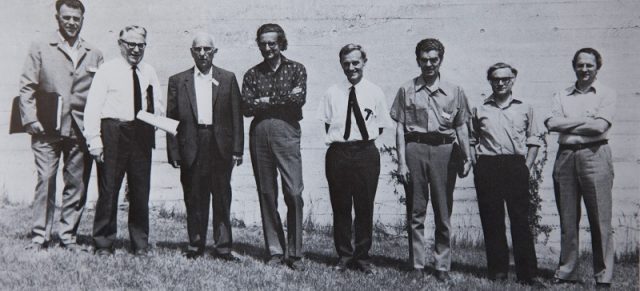
Let us talk about the reception of your psychological studies. Were other artists interested in your work, in particular at the Düsseldorf Art Academy?
Some well-known artists agreed to complete the VAST-Test and/or the EPI. There was, however, no strong interest in our studies. In the 1960s and 1970s – which was a particular productive period of the academy – Karl Otto Götz was very much alone with his ideas. Many colleagues could not understand why a famous artist dedicated so much of his time to scientific issues and the empirical study of aesthetics and they therefore chose to ignore this part of his work.
Is this related to the fact that many artists disapprove of science in general and the exact sciences in particular?
This is possible. I remember the responses of several artists regarding our psychological research. The predominant view was that Karl Otto Götz wasted his time. Out of the high respect for him, most of the famous German artists completed the test nonetheless.
How did other scientists respond to your work?
Within the field of psychology, our findings attracted a lot of attention and were generally seen as an important contribution to the field. However, the low level of professional response to the book Probleme der Bildästhetik was disappointing for us – to our knowledge, it was only cited by one scientist (who was not an art historian) in an annual review.
On the other hand, the response of philosopher Karl R. Popper (1906–1994) whom we sent our little book was encouraging. He immediately sent a positive feedback although he was ill at the time. But he also rose an objection: He advised us not to use the term “self actualization” as defined by the American psychologist Abraham Maslow (1908–1970). He considered this term empty since all human actions are a form of self actualization. His criticism of the use of the term was convincing: should a new version of the book ever be published, we would not use the term “self actualization”.
Were there further empirical studies based on your work by other scientists after you gave up active research? Did you have contact with those scientists?
After Berlyne’s death in 1980, two former students from Toronto came to visit us. They told us that Personality Psychology was replaced at their university by Social Psychology since it was no longer in demand. Unfortunately, Berlyne’s Psychology Department had been dissolved. From our point of view, this extreme change of course was not necessary.
Today it is well known that both predispositions as well as being brought up in a particular environment have important effects on human development. It would thus make sense to carry out new studies on the visual abilities of people from different cultural backgrounds and their possible implications for education.
It came as a positive surprise to us that the philosopher Harry Lehmann (born in 1965) referred to Berlyne`s research and the work of other psychologists in his book Gehaltsästhetik (Wilhelm Fink-Verlag, Paderborn 2016). Lehmann takes the terms beauty and dignity as used in classic aesthetics and visual arts and compares and relates them to the terms ambivalence and event according to Berlyne, which should serve as pillars of modern aesthetics and contemporary visual art.
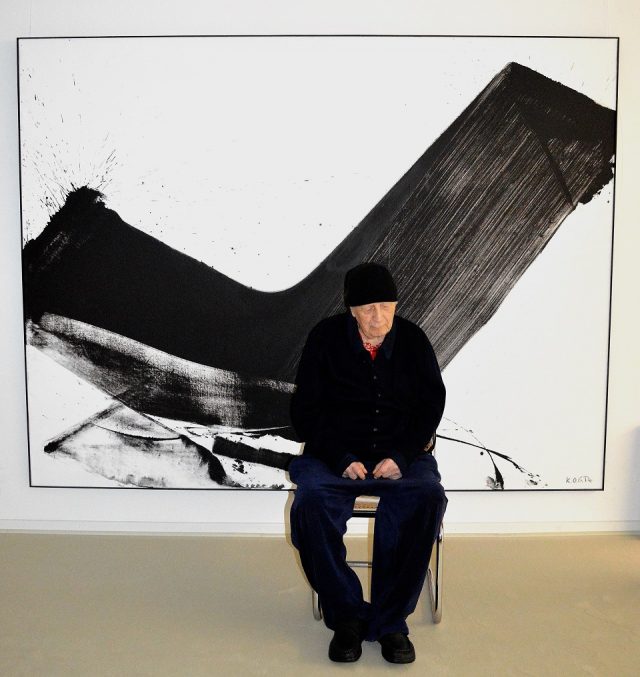
In our terminology, Karl Otto Götz and Rissa are „border crossers“ between visual art and science, i.e. individuals who are or have been active in both fields. What do you generally think of people with dual interests?
Border crossers between art and science are an asset, especially if they are creative and able to produce innovative work in both fields – but this is rare. Such creative top talents are always an exception.
What is your view on the relationship between creative and less creative individuals?
Average students will produce average work. This is not meant to imply discrimination since nature is very fond of the average. On our planet, this can be observed in extreme forms of creation (e.g. blazing fire and ice) where nature always creates an average feature, too, in this case the cold water of the oceans.
This example for balance is comforting, for us and for human development. Many different people are needed to produce, execute, desire, consume and pass on what has been created by the creators during the course of human development. This applies to all cultural and civilizational eras, including progress and setbacks.
We still remember well what Eysenck said in the 1970ies. The gist of it was that – not counting physicians – under certain circumstances bankers, cooks or garbage collectors are more important for survival than artists. Nature has always created the right people for all the different types of work that human beings have had to do and will still have do.
Is creativity mainly seen in artists?
No, this is a common misconception. In many fields of creation, there has always been a special type of creativity in different creators which led to outstanding cultural and civilizational achievements (with associated successes and failures). Examples are entrepreneurs, engineers, technicians, craftsmen, scientists, computer scientists, chefs, gardeners, architects, sportsmen, lawyers, physicians, theater people, film makers, photographers, writers, musicians, caregivers, teachers etc. One of our central ideas implies that imagination is an integral part of genuine creativity, that it is that extra something.
Could you elaborate on this point.
Let us take the scientist as an example, although we also talked about the power of innovation in other professions. A scientist, for example, can only develop a new theory if he is able to identify the shortcomings of existing theories on one hand and if he is able to develop and to test alternative approaches on the other hand. Innovative scientists feel a strong need to reorganize their field. They recognize the necessity and they also have the skills to implement such reorganization.
The term imagination as we use it includes both aspects. We think that enhanced imagination is one of the key features of creative personalities. It is vital for making new discoveries or for solving problems in an innovative way. Intelligence, persistence and high motivation play of course an important role, too.
The power of imagination of a visual artist is thus only a variant of this ability.
Exactly. Its special features manifest themselves in painting in visual art and they are implemented in the painted picture. Other forms of imagination realized by the human brain are still more or less a black box. However, they have manifested themselves in all kinds of areas ever since mankind existed.
As border crossers between art and empirical psychology, do you generally take a progressive and science-friendly position?
Yes. The dissimination of most accurate knowledge about human behavior and human learning capacity is important to us. This is why exact research is of utmost importance, in particular to counteract the widespread and frequently superficial assumptions or esoteric ideas which replace genuine knowledge in many people.
Let us talk about the relation between your artistic and scientific activities. Did scientific and psychological theories/methods/results in particular have an influence on your artistic work at a particular stage? Did Karl Otto Götz, because of his scientific activities, work differently as an artist at times?
His scientific work did not have an influence on his painting.
And what about Rissa?
It is the same for me.
Thank you very much for this interesting conversation.
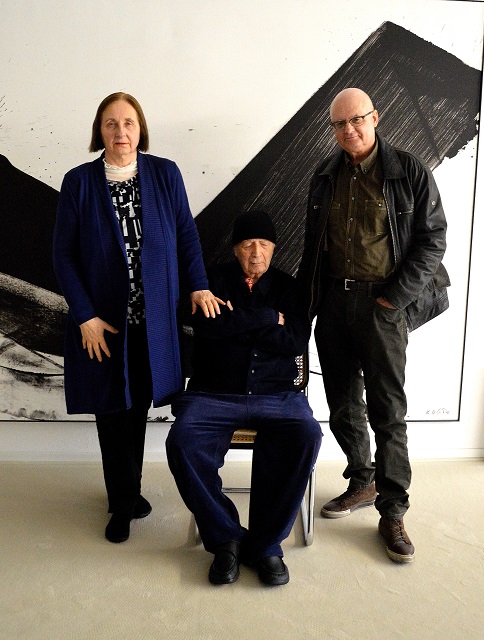
Picture above the text: From left to right: Peter Tepe, Rissa, Karl Otto Götz and Irene Daum. Private photograph.
Translation: Norah Lewerentz, Irene Daum
[1] H.J. Eysenck: Rebel with a Cause. W.A. Allen & Co, London 1990, S. 72−75.
How to cite this article
Irene Daum (2016): Karl Otto Götz as a Scientist. w/k–Between Science & Art Journal. https://doi.org/10.55597/e1173


… [Trackback]
[…] Info on that Topic: between-science-and-art.com/karl-otto-goetz-scientist/ […]
… [Trackback]
[…] Here you can find 88484 more Info to that Topic: between-science-and-art.com/karl-otto-goetz-scientist/ […]